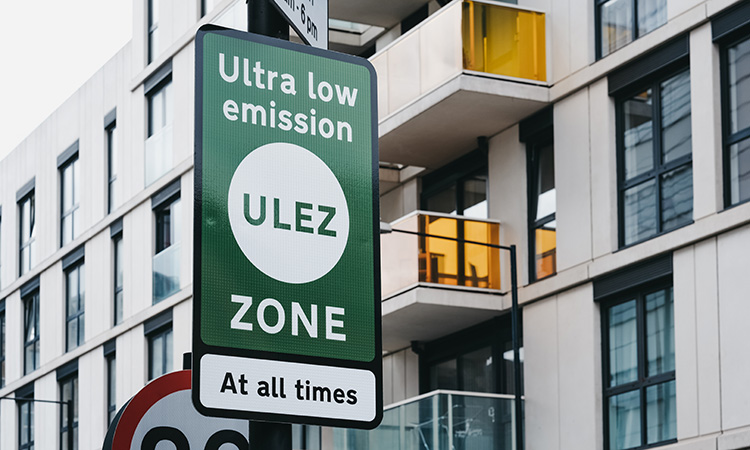A blueprint for sustainable urban mobility and decarbonisation in European cities
- Like
- Digg
- Del
- Tumblr
- VKontakte
- Buffer
- Love This
- Odnoklassniki
- Meneame
- Blogger
- Amazon
- Yahoo Mail
- Gmail
- AOL
- Newsvine
- HackerNews
- Evernote
- MySpace
- Mail.ru
- Viadeo
- Line
- Comments
- Yummly
- SMS
- Viber
- Telegram
- Subscribe
- Skype
- Facebook Messenger
- Kakao
- LiveJournal
- Yammer
- Edgar
- Fintel
- Mix
- Instapaper
- Copy Link
Posted: 9 April 2024 | Martin Baierl - Clean Cities Campaign | No comments yet
Martin Baierl, Data Analyst at the Clean Cities Campaign, highlights the findings of the Clean Cities Campaign’s latest (E)Mission Zero report with a focus on decarbonisation strategies, emphasising the collaborative data analysis process that underpins actionable pathways towards sustainable urban mobility and reduced emissions.


As the lead author of the Clean Cities Campaign’s latest report (E)Mission Zero, could you please provide us with an overview of the key objectives and findings of the study, particularly focusing on its significance in addressing urban transport decarbonisation challenges in European cities?
We found that if city leaders are ambitious and use these policies to best effect, we can achieve over 90% reduction of emissions in five European cities”
We all know that we need to decarbonise our transport system, and fast. The clock is ticking, and the European Commission recently said that transport emissions need to fall by 84% by 2040. With this study, we looked at what would be required and how cities could get there. The good news is, (E)Mission Zero shows us that it is possible, and we don’t need any new technologies to get there. We modelled around 25 different policies to see which are the most effective, and we found that if city leaders are ambitious and use these policies to best effect, we can achieve over 90% reduction of emissions in five European cities – Brussels, Madrid, Warsaw, Milan and Greater Manchester.
The report emphasises the importance of policy measures such as low/zero-emission zones, electrification of vehicles and expansion of cycling infrastructure. How do these measures contribute to reducing greenhouse gas (GHG) emissions and promoting sustainable urban mobility?
It’s not enough to just stop people from doing particular activities, you have to also provide a suitable and convenient alternative”
Yes, we found that low- and zero-emissions zones, as well as revolutionising urban logistics, electrifying public transport and expanding cycling infrastructure are the most effective policies at city level. Low-and zero-emission zones are effective because they discourage travel with the most polluting modes and can encourage a shift to active travel and public transport. These measures must be accompanied by steps to provide alternatives, and this is why we chose to highlight cycling infrastructure.
It’s not enough to just stop people from doing particular activities, you have to also provide a suitable and convenient alternative – you need the carrot as well as the stick. We found that focusing on electrifying the fleet will reduce the carbon emissions by around two thirds by 2030 in all the cities we modelled, but this showed clearly that this policy is not enough on its own to reach zero-emissions from urban transport.
One of the scenarios outlined in the report aims for over 90% reduction in GHG emissions from urban transport by 2030. What are the most significant challenges city leaders might face in implementing such ambitious decarbonisation policies, and how can they overcome them?
The lesson for city leaders is to make sure that any of these policies are implemented carefully but also in a socially just way”
The most significant challenges city leaders will face is implementing policies which might become unpopular. We saw in London that there was backlash against the introduction of the Ultra -low emission zone (ULEZ), even though the evidence is strong that LEZs can help to reduce harmful NO2 emissions by around 20%.
However, we also saw that the voices opposed to the introduction of many of these policies are often much louder than the ‘silent majority’ who don’t voice their support publicly. Just because we see something in the media doesn’t mean it’s an accurate reflection of how most people feel on an issue. So, the lesson for city leaders is to make sure that any of these policies are implemented carefully but also in a socially just way. At Clean Cities, we have developed a list of suggestions of how city leaders can do this – there need to be exemptions from LEZs in some cases, there needs to be a long lead time to give people the chance to make the necessary changes, there needs to be a good public awareness campaign to explain the reasons and benefits of the policy, there needs to be flexibility and if something isn’t working, policy makers should re-design it.


The study suggests that achieving close to zero-emission transport by 2030 is highly ambitious but possible using available policies and technologies. Could you elaborate on some of the innovative technologies and policy interventions highlighted in the report that can accelerate the transition to sustainable urban mobility?
None of the 25 policies we modelled in our report are unknown or untested, all of them are implemented to greater and lesser extents in cities across Europe today. For instance, Oslo has almost completely electrified its bus fleet, Utrecht and Copenhagen are showing us how to encourage cycling, Amsterdam is implementing a zero-emission zone, Paris and Barcelona show us how we can calm traffic. The policies which we found to be the most effective are greening urban logistics fleets (by shifting to electric vans and cargo bikes), electrifying the public transport network, expanding cycling infrastructure and introducing traffic calming measures. Most often these are effective because they are providing an alternative to private car ownership or deliveries by diesel vans.
Co-benefits associated with decarbonisation include decreased air and noise pollution, improved road safety and reduced energy consumption. How do these co-benefits contribute to creating healthier, more liveable cities, and what are the potential economic implications of implementing such policies?
The health costs associated with air pollution in European cities were estimated at over €1,200 per person in the EU every year”
Many of us want to live in cleaner, greener cities where we breathe clean air and don’t spend lots of time sitting in traffic jams. The health costs associated with air pollution in European cities were estimated at over €1,200 per person in the EU every year. We can expect to see reductions in air pollution and time lost to sitting in traffic if citizens are able to make better choices about how they travel around, especially if they are given good alternatives to private car ownership. We found in our study that in almost all the scenarios and cities, the benefits of taking the necessary action outweigh the costs.
Given the European Union’s latest climate target of reducing carbon emissions by at least 90% by 2040, how does the (E)Mission Zero report contribute to the ongoing debate on urban transport decarbonisation and provide evidence for the impact of different policy options?
100 European cities have signed up to be climate neutral by 2030, but as of yet many of them have not produced detailed plans on how to achieve this”
We hope that (E)Mission: Zero will be an important contribution to the debate about how cities should decarbonise. We’ve seen a lot of commitment in recent years for cities to reach zero-emissions or net zero, but there is precious little detailed modelling on how they can do this quickly and effectively. 100 European cities have signed up to be climate neutral by 2030, but as of yet many of them have not produced detailed plans on how to achieve this.
We hope our study will provide a starting point for discussions, we hope that policy makers and leaders will be able to look at our conclusions and relate them to the political realities they face on the ground. For example, in Milan, the city is quite compact, so they may choose to focus their effort on freight decarbonisation in a small centralised zero emissions zone, whereas in Greater Manchester, which it is more spread out, it might make more sense to prioritise electrifying and expanding the bus network.


Related topics
Active travel, Air Quality, Alternative Power, Public Transport, Sustainable Urban Transport, Transport Governance & Policy
Related modes
Bikes & Scooters, Bus & Coach
Related cities
Amsterdam, Barcelona, Brussels, Copenhagen, Greater Manchester, London, Madrid, Milan, Oslo, Paris, Utrecht, Warsaw
Related countries
United Kingdom
Related organisations
Clean Cities Campaign
Related people
Martin Baierl








